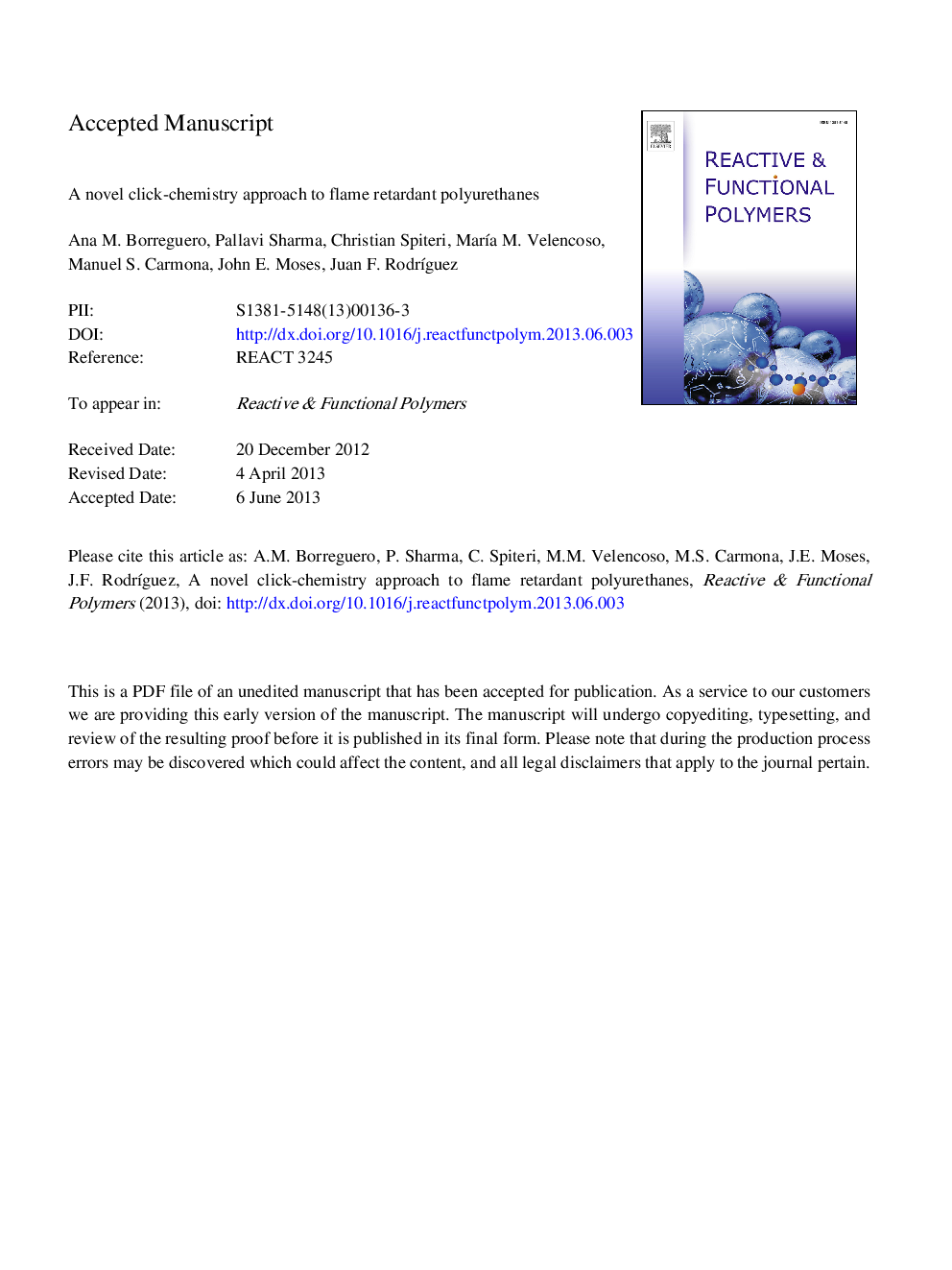| Article ID | Journal | Published Year | Pages | File Type |
|---|---|---|---|---|
| 5210016 | Reactive and Functional Polymers | 2013 | 24 Pages |
Abstract
The low thermo-oxidative properties of PU foams somewhat limits their practical application, particularly as heat sensitive materials. The introduction of a covalently linked flame retardant organophosphonate ester into the PU foam was achieved using the CuAAC 'click' reaction of an alkyne-polyol and azidoalkylmonophosphonate. These functionalised materials were prepared in four steps: first, a number of azidoalkyl monophosphonate compounds were formed via nucleophilic substitution of bromoalkylphosphonates with NaN3; next, polyols bearing terminal alkyne groups were prepared by anionic ring opening copolymerization between propylene oxide and glycidyl propargyl ether; followed by 'clicking' the azidoalkylphosphonate to the polyol and finally, synthesis of the PU foam with 2.4 wt% of “click-polyol”. The functionalised PU foam demonstrated a well-formed polyhedral cell structure and an increase in the fire resistance, according to the SEM and thermogravimetric analysis, respectively. Even after thermal treatment at 400 °C, the new PU foam material displayed enhanced flame resistant properties by forming a char layer on the surface of the polymer, whilst maintaining its polyhedral structure.
Related Topics
Physical Sciences and Engineering
Chemistry
Organic Chemistry
Authors
Ana M. Borreguero, Pallavi Sharma, Christian Spiteri, MarÃa M. Velencoso, Manuel S. Carmona, John E. Moses, Juan F. RodrÃguez,
